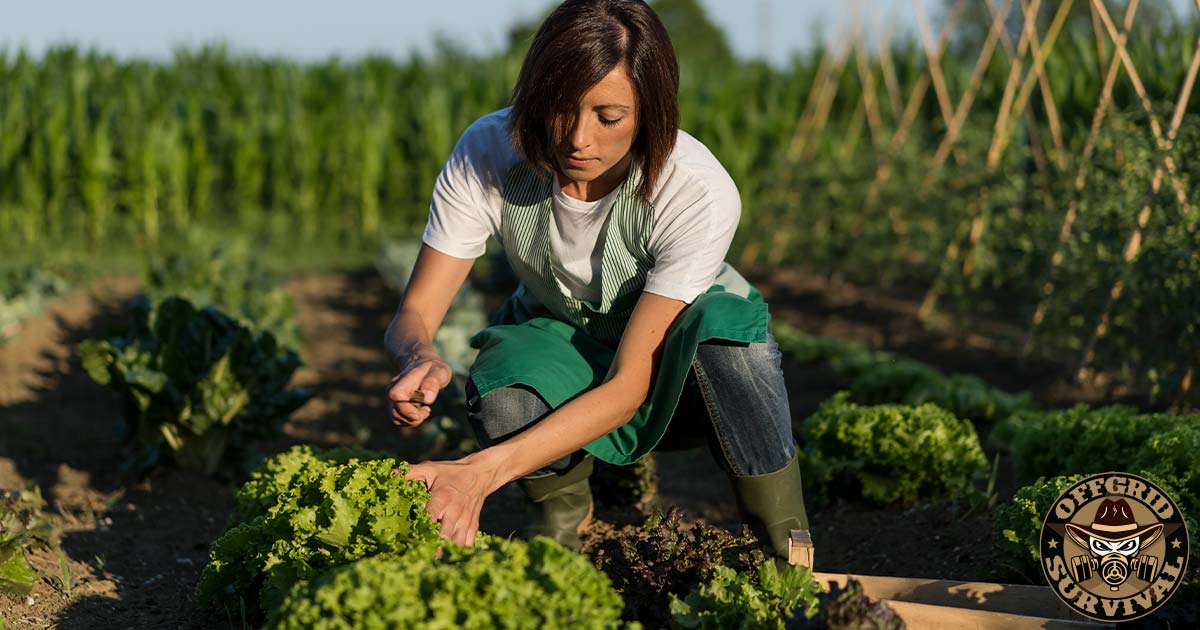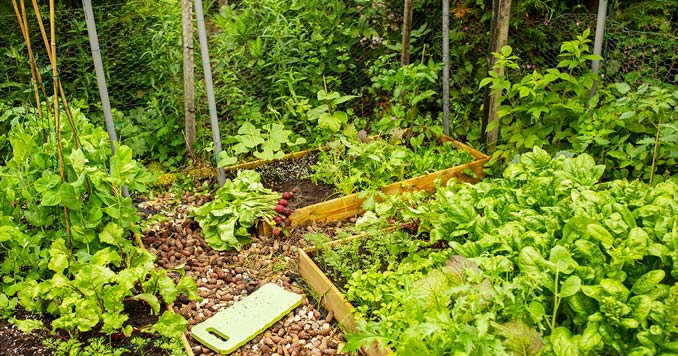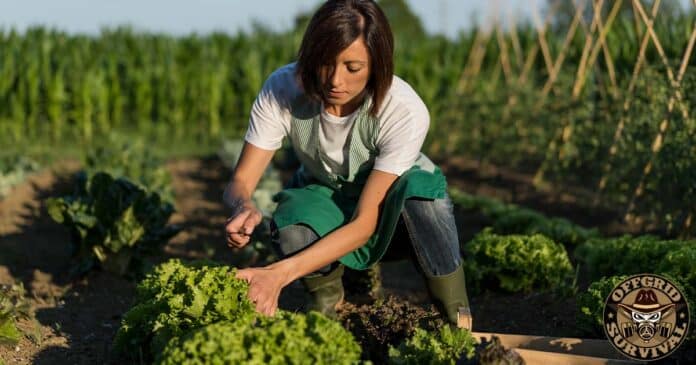
As a seasoned gardener and someone who thinks having a productive backyard garden is essential to be prepared for anything, you’re always on the lookout for ways to improve your garden’s health and productivity. One effective technique that can enhance the health of your vegetable garden is companion planting.
Companion planting involves growing different plant species in close proximity to each other, with the goal of creating mutually beneficial relationships that promote growth, deter pests, and improve overall garden health. So let’s explore the art of companion planting for vegetables, including the best plant pairings, the benefits of companion planting, and practical tips for successful implementation in your garden.
Companion planting offers several benefits that can significantly improve the health and yield of your vegetable garden. Some of the key benefits of companion planting include:
Pest Control: Companion planting can help naturally deter bugs without the need for harmful chemical pesticides. Certain plants, like marigolds, basil, and radishes, have natural pest-repellent properties that can help protect your vegetables from common pests like aphids, beetles, and flies.
Pollination: Some companion plants, such as flowers, attract pollinators like bees, butterflies, and other beneficial insects, which can help increase the pollination of your vegetable crops. Improved pollination can result in higher yields and better-quality fruits and vegetables.
Soil Health: Companion planting can also improve soil health by adding organic matter, increasing nutrient availability, and enhancing soil structure. For example, legume plants like beans and peas fix nitrogen in the soil, which can benefit neighboring plants by providing them with a natural source of fertilizer.
Biodiversity: Companion planting promotes biodiversity in your garden by encouraging the growth of different plant species. This diversity can help create a more balanced ecosystem in your garden, leading to better overall plant health and resilience to diseases and pests.
Space Maximization: Companion planting allows you to make the most of limited space in your garden. By carefully selecting plant pairings, you can utilize vertical space, create natural shade or windbreaks, and optimize the use of available resources like sunlight, water, and nutrients.
Sustainable Gardening: Companion planting is a sustainable gardening practice that reduces the reliance on chemical fertilizers and pesticides, making it an eco-friendly option for avid gardeners. It promotes a more natural and holistic approach to gardening, which can result in a healthier and more environmentally friendly garden.
Common Myths and Misconceptions
Dispelling common myths and misconceptions about companion planting can help preppers make informed decisions in their gardens. Here are some examples:
| Myth/Misconception | Fact |
|---|---|
| Companion planting guarantees pest control. | Companion planting is not a foolproof method of pest control and should be used in conjunction with other integrated pest management practices. |
| All plants can be grown together as companions. | Not all plants are compatible, and some may even inhibit the growth of their neighbors. Research and plan accordingly. |
| Companion planting eliminates the need for other gardening practices. | Companion planting is just one aspect of a well-rounded gardening approach and should be combined with other practices such as crop rotation, proper watering, and soil management. |
- The “Three Sisters” method: Planting corn, beans, and squash together in a traditional Native American technique called the “Three Sisters” method: Corn provides support and shade for beans to climb, beans fix nitrogen in the soil for corn, and squash acts as living mulch to suppress weeds and retain moisture.
- Planting corn, beans, and squash together in a traditional Native American technique called the “Three Sisters” method: Corn provides support and shade for beans to climb, beans fix nitrogen in the soil for corn, and squash acts as living mulch to suppress weeds and retain moisture.
- Planting basil and tomatoes together: Basil repels tomato hornworms and whiteflies, while tomatoes repel pests that attack basil, making them great companions.
- Planting marigolds with vegetables: Marigolds have natural insect-repelling properties and can help deter pests such as aphids, nematodes, and whiteflies from attacking neighboring vegetables.
- Planting carrots and onions together: Carrots and onions have complementary root systems and can grow well together without competing for nutrients, making them great companions.

To ensure successful companion planting in your vegetable garden, consider the following tips:
Know Your Plants: Research and understand the growth habits, nutrient requirements, and pest vulnerabilities of your vegetable plants. This knowledge will help you select suitable companion plants that can complement and benefit each other.
Plan Your Layout: Plan your garden layout carefully, considering the spacing and arrangement of companion plants. Some plants may compete for resources or inhibit each other’s growth if planted too closely, so be mindful of their needs and growth patterns.
Rotate Crops: Just like traditional gardening, crop rotation is also essential in companion planting. Avoid planting the same vegetables or their companions in the same spot year after year to prevent nutrient depletion and disease buildup.
Use Succession Planting: Succession planting involves planting different crops in the same space in a sequence, allowing you to harvest multiple crops in one season. This technique can help optimize space and extend your harvest season.
Monitor Pests and Diseases: Keep a close eye on your garden for any signs of pests or diseases. Early detection and intervention can prevent the spread of pests or diseases and protect your companion plants.
Experiment and Observe: Companion planting is not an exact science, and different gardens may have different results. Don’t be afraid to experiment and observe the interactions between your companion plants. Keep a garden journal to record your observations and learn from your experiences.
Unlock the Secrets of Successful Gardening: Your Ultimate Companion Planting Chart for 20 Common Vegetables!

I know how important it is to carefully plan out your garden to optimize plant health and yield. This chart lists a list of vegetables, ranging from tomatoes to cucumbers to carrots, and their recommended companion plants. These companion plants can help deter pests, improve pollination, enrich the soil, and provide shade or support to their companion crops. By strategically selecting companion plants for your vegetables, you can create a harmonious and thriving ecosystem in your garden.
For example, did you know that planting basil alongside tomatoes can help repel pests like aphids and whiteflies while enhancing the tomatoes’ flavor? Or that planting marigolds near your cucumbers deters pests like beetles and nematodes? These are just a couple of examples of the many beneficial interactions between companion plants.
So, whether you’re a seasoned gardener or just starting, this companion planting chart is a valuable resource to help you plan your garden and reap the benefits of healthy and productive plants.
Companion Planting Chart
| Crop Name | Companions | Benefits and Plant Notes |
|---|---|---|
| ASPARAGUS | CalendulaPetuniasTomatoes | Calendula, tomatoes, and petunias are often used as companion plants to deter asparagus beetles. |
| BASIL | PeppersPurslaneTomatoes | You know what’s great for keeping basil plants fresh in hot weather? Purslane! It’s used to provide shade to the soil around basil, helping them thrive even in scorching temperatures. Plus, basil is a real team player in the garden! It’s known to improve the growth and flavor of tomatoes and peppers, making it a perfect companion plant for your veggie patch. |
| BEANS | BeetsCornLovageNasturtiumRosemarySquashStrawberriesSunflower |
If you’re looking for natural ways to protect your beans from aphids, why not try using nasturtiums as trap plants? These vibrant flowers can lure aphids away from your precious beans, acting as decoys and helping to keep your crop safe. And that’s not all! Lovage and rosemary are also fantastic options for repelling insects in your garden. Planting them near your veggies can help deter pests without resorting to harmful chemicals. Sunflowers to the rescue! These tall beauties can provide much-needed shade for sun-stressed plants, helping them recover and thrive. Plus, if you’re growing corn, here’s a smart gardening tip: plant beans nearby! Beans are known for their nitrogen-fixing capabilities, which can benefit corn by enriching the soil with nitrogen, a vital nutrient for healthy plant growth. And speaking of beans, pole beans can serve a dual purpose in your garden. They not only fix nitrogen in the soil, but they also provide sturdy structural support for climbing plants. It’s a win-win for your garden! |
| BEETS | BrassicasBush beansGarlicLettuceOnion family |
Did you know that beets can make great companions for chicory and endive in your garden? These three plants can thrive when grown together, creating a beneficial relationship that promotes healthy growth and yields. Plus, beets have an additional trick up their sleeve! Their leaves are packed with magnesium, containing about 25% of this essential mineral. As the beet leaves decompose, they release magnesium into the soil, enriching it and providing important nutrients for other plants in the vicinity. These aromatic bulbs are known to repel borers and cutworms, which can be destructive to many vegetable crops. By planting onions strategically in your garden, you can help protect your precious plants from these common pests, reducing the need for harmful pesticides. |
| BROCCOLI | OreganoOther Brassicas(Cabbage, brussels sprouts, cauliflower, etc.) | Did you know that oregano can act as a natural insecticide in your garden? This aromatic herb not only adds flavor to your culinary creations, but it also has insecticidal properties that can help deter pests from your garden.When it comes to planting brassicas, like cabbage, broccoli, and cauliflower, consider grouping them together. This allows you to cover them with nets, which can help protect them from common pests like cabbageworms. Plus, all these brassicas plants have a similar preference for lime in the soil, so adding lime can benefit their growth and overall health. |
| CABBAGE | GarlicNasturtiumSage | Nasturtiums are effective in deterring insect pests like beetles and aphids. When planted alongside cabbage, garlic can repel insects with its strong odor. Sage is also known to deter cabbage moths. |
| CARROTS | BeansChivesLettuceOnionsPeasRadishRosemarySageTomatoes | Carrots thrive when grown with companion plants like beans, chives, lettuce, onions, peas, radish, rosemary, sage, and tomatoes. These companion plants can help repel pests and improve the flavor of carrots |
| CORN | BeansCucumberMelonsPeasPotatoesPumpkinSquash | Corn makes great companions with beans, cucumber, melons, peas, potatoes, pumpkin, and squash. These companion plants can provide shade, support, and beneficial interactions that help corn thrive in the garden. |
| CUCUMBER | BeansCeleryCornDillPeasRadishSunflower | Cucumbers are known to thrive when grown with companions such as beans, celery, corn, dill, peas, radish, and sunflower. These companion plants can provide valuable support for cucumbers, offering shade, structural support, and even natural pest deterrence. For example, beans and peas can provide trellis support for cucumbers to climb, while dill and radish can help repel pests that may harm cucumbers. Additionally, corn and sunflower can provide shade to protect cucumbers from excessive heat. Planting cucumbers alongside these beneficial companions can create a harmonious and mutually beneficial growing environment in the garden. |
| MELONS | CornMarigoldsNasturtiumRadishSunflower | Melons are known to thrive when grown alongside companions such as corn, marigolds, nasturtium, radish, and sunflower. These companion plants can provide multiple benefits to melon plants, including natural pest deterrence, shade, and improved overall health. For example, marigolds and nasturtiums can help repel pests that may harm melons, while corn and sunflowers can provide shade to protect melons from excessive heat. Radish can also help improve soil health and provide a natural barrier against pests. Planting these companions alongside melons can create a symbiotic relationship that enhances the growth and productivity of melon plants in the garden. |
| PEAS | CarrotsCornCucumberBeansRadishSpinachStrawberry | Peas are excellent companions in the garden, benefiting a variety of plants such as carrots, corn, cucumber, beans, radish, spinach, and strawberry. These companion plants can provide multiple advantages to their fellow plants, including nitrogen fixation in the soil, which helps improve overall soil health and fertility. In addition, peas can provide structural support for climbing plants like beans and cucumber. Their presence in the garden can create a harmonious environment where each plant thrives and supports the growth of its companions. |
| POTATOES | BeansCabbageCornMarigoldsPeasRadishSquash | “Potatoes are great team players in the garden, and they thrive when planted alongside companions like beans, cabbage, corn, marigolds, peas, radish, and squash. These companion plants can provide multiple benefits to potatoes, including pest deterrence and overall health improvement. For example, beans can help fix nitrogen in the soil, which is beneficial for potatoes’ growth. Cabbage can help repel pests with its strong scent, while marigolds act as natural pest repellents with their bright flowers. Peas and radish can improve soil health through nitrogen fixation and nutrient cycling. Squash can provide shade and ground cover to help reduce weed growth. By planting these companions alongside potatoes, you can create a supportive ecosystem in your garden that promotes healthy growth and minimizes pest problems. |
| PUMPKIN | BeansCornMarigoldsRadishSquashSunflower | Pumpkin thrives with companions like beans, corn, marigolds, radish, squash, and sunflower. These companions provide pest deterrence, shade, and overall health improvement for pumpkin plants. For example, beans can help fix nitrogen in the soil, while marigolds act as natural pest repellents. Corn and sunflowers can provide shade and support, while radish and squash can help improve soil health. By planting these companions alongside pumpkin, you can create a beneficial environment that promotes healthy growth and minimizes pest issues. |
| SQUASH | BeansCornMarigoldsNasturtiumRadishSunflower | Squash thrives with companions like beans, corn, marigolds, nasturtium, radish, and sunflower. These companions provide pest deterrence, shade, and overall health improvement for squash plants. For example, beans and corn can provide structural support and shade, while marigolds and nasturtium act as natural pest repellents. Radish and sunflower can help improve soil health. By planting these companions alongside squash, you can create a beneficial environment that promotes healthy growth and minimizes pest issues. |
| TOMATOES | AsparagusBasilCarrotsCeleryCucumberOnionParsleyPepperMarigoldsNasturtiumBorage | Tomatoes have several beneficial companion plants, including asparagus, basil, carrots, celery, cucumber, onion, parsley, pepper, marigolds, nasturtium, and borage. These companions can help improve tomato growth and deter pests. For example, basil and marigolds can repel pests, while carrots and celery can provide nutrient-rich soil. Nasturtium and borage can attract beneficial insects that prey on pests. By planting these companions alongside tomatoes, you can create a healthy and pest-resistant environment for your tomato plants. |
| WATERMELON | BeansCornMarigoldsNasturtiumRadishSunflower | Watermelon is a beneficial companion for beans, corn, marigolds, nasturtium, radish, and sunflower. These companions can help deter pests, provide shade, and improve the overall health of watermelon plants. For example, beans and corn can provide structural support, while marigolds and nasturtium can repel pests. Radish and sunflower can attract beneficial insects that prey on pests. By planting these companions alongside watermelon, you can create a thriving and pest-resistant environment for your watermelon plants. |
While companion planting can be beneficial, there are some considerations and challenges to keep in mind:
- Plant compatibility: Not all plants are compatible, and some may even inhibit each other’s growth. Research and plan accordingly to avoid negative interactions.
- Spacing and sunlight requirements: Companion plants may have different spacing and sunlight requirements. Ensure that plants are adequately spaced and receive the appropriate amount of sunlight for optimal growth.
- Success may vary: Companion planting success can vary depending on factors such as soil quality, climate, and pests present in the area. Experimentation and observation are key to determining what works best in your specific garden.
Companion planting can be a valuable strategy for preppers to enhance the productivity and resilience of their vegetable gardens. With careful observation and experimentation, companion planting can be a successful gardening technique for preppers to incorporate into their preparedness plans.
- “Carrots Love Tomatoes: Secrets of Companion Planting for Successful Gardening” by Louise Riotte – This classic book is a must-read for anyone interested in companion planting. It provides comprehensive information on the best and worst plant pairings based on decades of gardening experience. The book covers a wide range of vegetables, herbs, and flowers and includes tips on natural pest control and organic gardening practices.
- “The Vegetable Gardener’s Bible” by Edward C. Smith – Although not solely focused on companion planting, this book includes valuable information on planning and maintaining a thriving vegetable garden using organic methods. It covers crop rotation, soil health, and pest management, which are crucial aspects of successful companion planting.
- “Great Garden Companions: A Companion-Planting System for a Beautiful, Chemical-Free Vegetable Garden” by Sally Jean Cunningham – This book provides practical guidance on creating a thriving vegetable garden using companion planting techniques. It includes detailed information on plant pairings, planting schedules, garden designs, and tips on natural pest control and soil improvement.
- “Rodale’s Basic Organic Gardening: A Beginner’s Guide to Starting a Healthy Garden” by Deborah L. Martin – This comprehensive guide covers all aspects of organic gardening, including companion planting. It provides step-by-step instructions on creating a healthy and productive garden using organic methods, including companion planting for pest control and enhanced plant growth.
- “Companion Planting: The Vegetable Gardeners’ Guide” by Jessica Walliser – This practical guide provides in-depth information on companion planting for a wide variety of vegetables. It includes detailed plant profiles, plant pairings, planting plans, and tips on natural pest control, soil improvement, and maximizing garden space.


